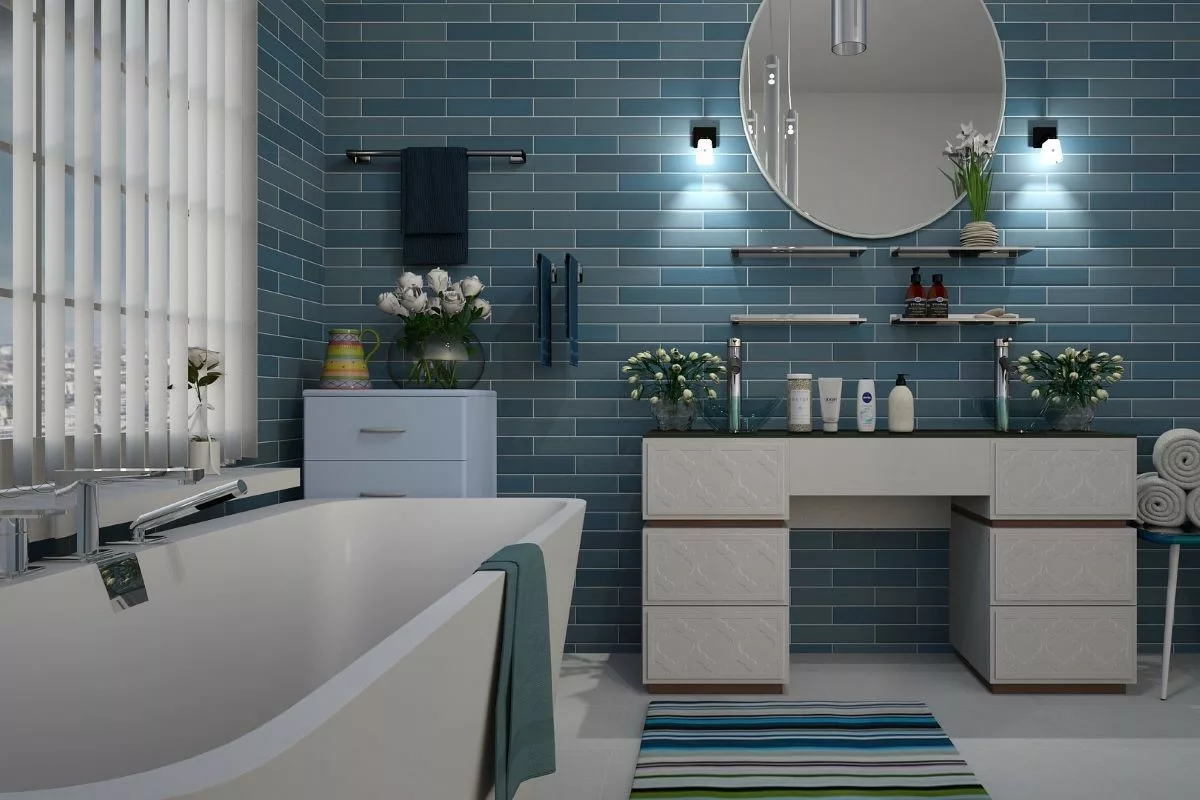The bathroom is one of the most stimulating rooms in the house. This space is bright and can be noisy with powerful odors, and there are a wide range of aspects that are uncomfortable to the touch such as cold tiles.
For people with autism, this sensory stimulation can be completely overwhelming and make the bathroom an unpleasant environment in which to be. Using the bathroom can therefore become an ordeal that repeats itself several times a day. Follow our guide to sensory-friendly bathroom design and see how you can transform this stereotypically stimulating room into a space that is safe, welcoming, and usable for all.
Use a calming color palette
One of the easiest ways to make your bathroom less stimulating is to use a calming color palette. Colors like blue and green have been shown to promote a sense of serenity while vibrant shades can cause feelings of stress. Stay away from busy patterns too, as these can also inspire anxiety.
Focus on your textures
After the visual aspects of a room, texture is the most important element of a sensory-friendly room design. People with autism have an individual taste in textures, so you should test the response to different things and identify which are comforting and which are triggering. Visiting a local bathroom showroom might be beneficial as you can explore lots of different textures at the same time.
Broaden your lighting options
Sensory-friendly lighting is often overlooked in interior design, but it is a crucial aspect of setting your preferred atmosphere. While you will need bright lights in certain areas of the bathroom, such as around the mirror, try to incorporate soft lighting in other areas to create a soothing environment. You could add lamps or update your overhead lighting to make it dimmable.
Minimize powerful scents
The next sense to consider is smell. The bathroom is a space will a variety of powerful scents, such as the fresh and floral odours of soaps and shower gels and the harsh chemical reek of bleach. When selecting products for cleaning and personal hygiene, try to choose gentle odorless cleansers. You can neutralize other bathroom smells with a toilet air freshener and a mildly scented candle.
Safeguard against loud noise
The last sense on the list is hearing. Safeguard against loud noise as much as possible to keep the bathroom a peaceful space. This includes constant sounds such as the rattle of an extractor fan and startling bangs and clangs. The toilet is particularly noisy: update to a quieter dual flush system and a soft-close toilet seat that ensures totally silent opening and closing.
Follow me down the rabbit hole!
I'm Alice and I live with a dizzying assortment of invisible disabilities, including ADHD and fibromyalgia. I write to raise awareness and end the stigma surrounding mental and chronic illnesses of all kinds.








